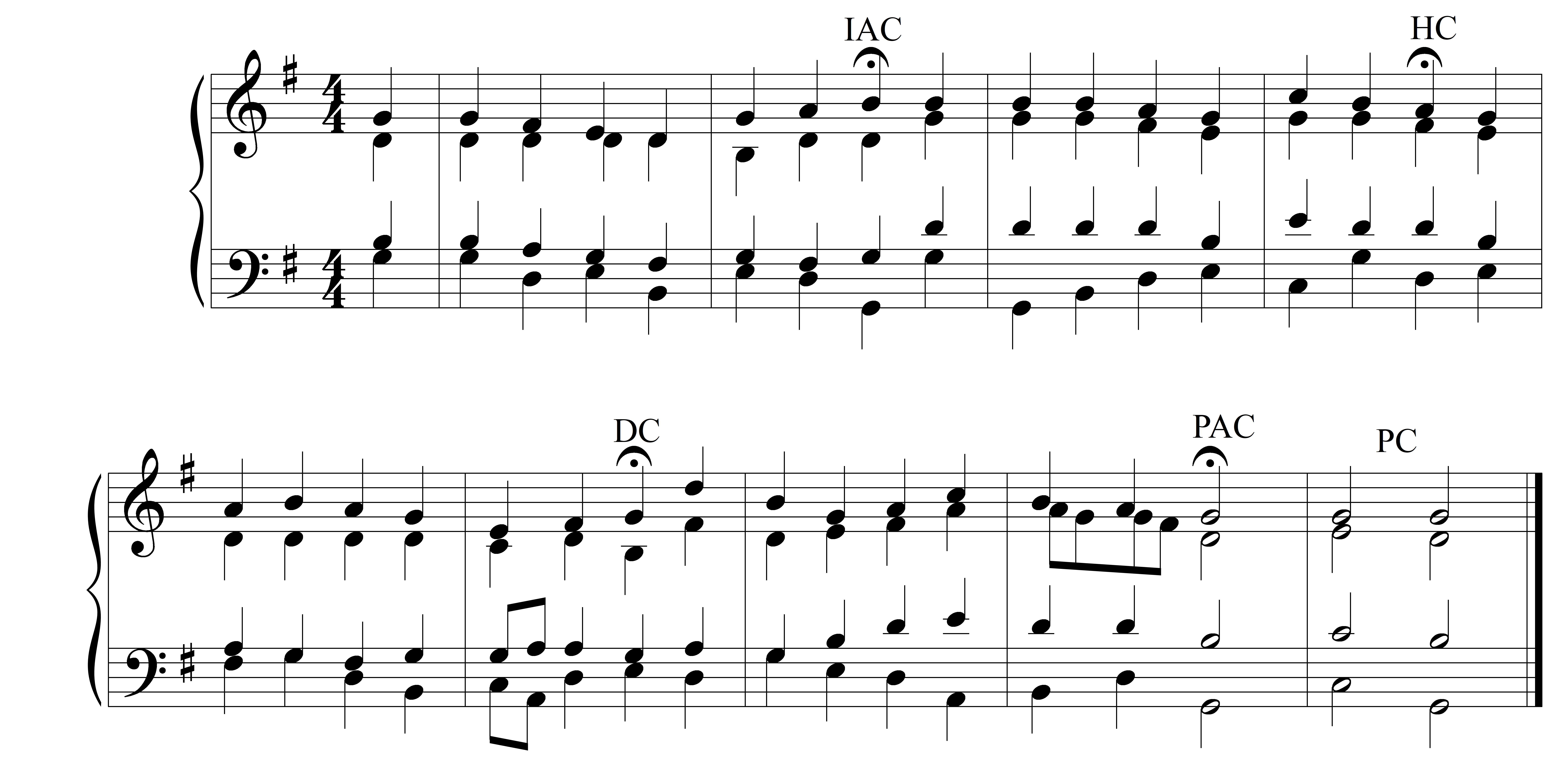Integrated Aural Skills 2018-19
Please note: this is an archived version of the textbook. Visit IntMus for up to date content!
Ear Training - Cadences
Cadences
You are likely already familiar with some of the most familiar types of chord progressions: cadences.
A cadence is composed of the two final chords in the harmonic progression that ends a musical phrase.

Commit the following table to memory:
| Cadence Type | Perfect Authentic Cadence | Imperfect Authentic Cadence | Plagal Cadence | Deceptive Cadence | Half Cadence |
| Chords | V-I | V-I | IV-I | V-vi | I-V |
| Features | soprano must resolve to tonic; root position V must resolve to root position I; often found at the end of a piece | Soprano doesn’t have to resolve to tonic; dominant function doesn’t have to be in root position; dominant function may be V7 or vii0(7) | Also known as “Amen Cadence”; often appears in traditional church music; relatively rare in Classical-era music | Called “deceptive” because it comes as a surprise instead of a PAC | Often appears at mid-point of a phrase |
All of the above cadences appear in this four-part setting of Psalm 100 from the Geneva Psalter (1551):
